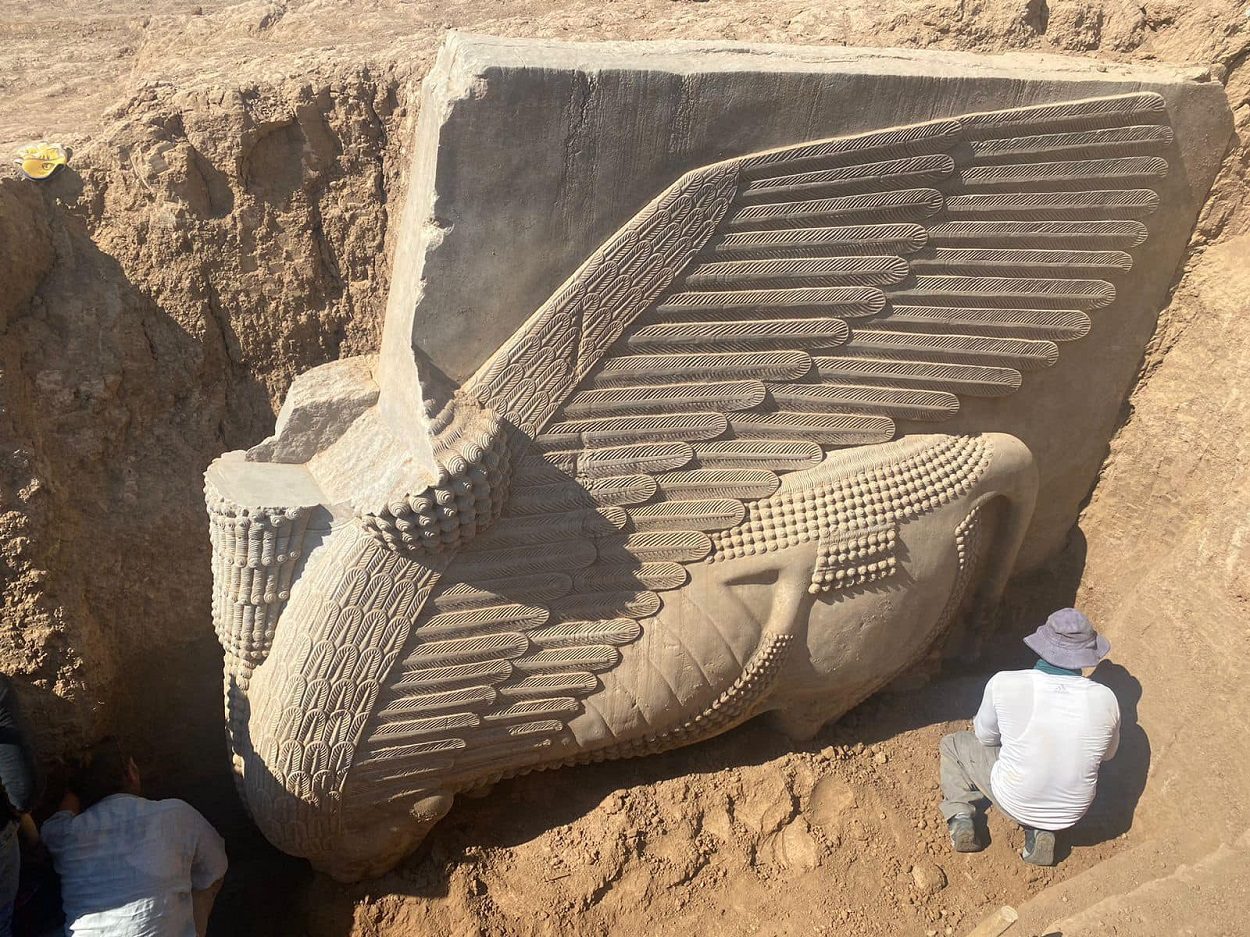In a press announcement by the General Authority for Antiquities and Heritage, archaeologists have re-excavated an ancient lamassu at Kursbad, Iraq.
A lamassu is an Assyrian protective deity normally depicted with a blending of human, avian, and either bovine or leonine elements. Most lamassus are shown with a human-like head, a body resembling that of a bull or lion, and wings like a bird.
Assyrian sculpture commonly featured pairs of lamassu positioned at palace entrances, facing both the street and internal courtyards. These imposing figures were depicted in high relief, showcasing a dual perspective that appears to stand still when head on and in motion from the side.
Although lamassu were not typically found as large figures in the low-relief decorations adorning palace rooms – where winged genie figures were more prevalent – they occasionally made appearances in narrative reliefs, seemingly serving as protectors of the Assyrians.
According to the press release, the lamassu was first discovered in 1992 by an Iraqi archaeological mission during excavations at the 6th gate, located in the western part of the ancient city of Khursbad.
Khorsbad was constructed as a new capital city by the Assyrian king Sargon II shortly after he came to the throne in 721 BC. Following Sargon II’s death, his son and successor, Sennacherib, moved the capital to Nineveh, leaving construction of Khursbad incomplete.
Following the lamassu discovery, the head was stolen in 1995, but was later recovered and preserved in the Iraqi Museum. The main body was then reburied to preserve the architectural remains following the Gulf War conflict. This act likely saved the lamassu from destruction, as in 2015 ISIS systematically looted and destroyed much of the remains of Khursbad.
In a joint Iraqi/French mission, a team led by Professor Dr. Ahmed Fakak Al-Badrani have recently re-excavated the lamassu, revealing it for the first time to the world in three decades.
According to Dr. Layth Majid Hussein, Chairman of the General Body for Archaeology and Heritage, the team are currently assessing the condition of the lamassu to determine their next steps.
General Authority for Antiquities and Heritage
Header Image Credit : Mustafa Yahya







